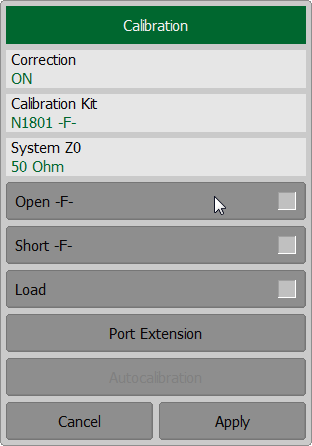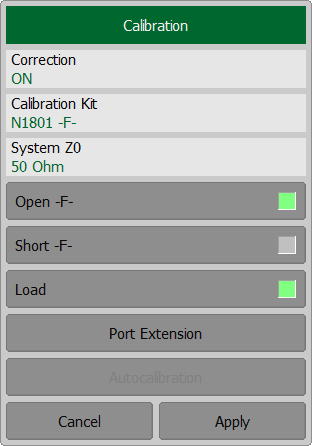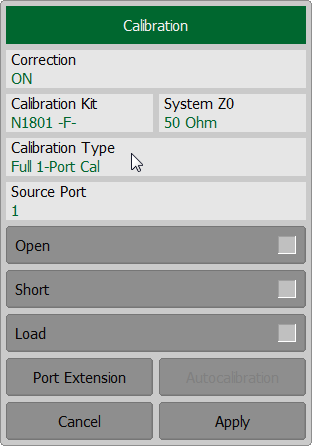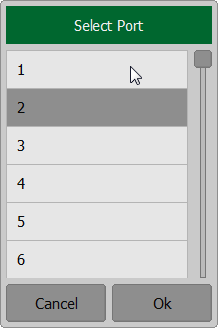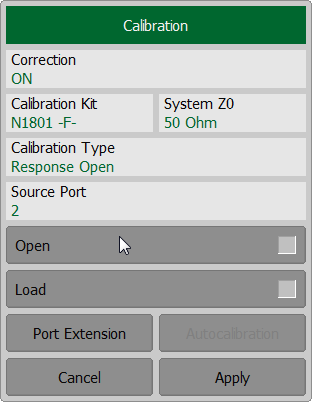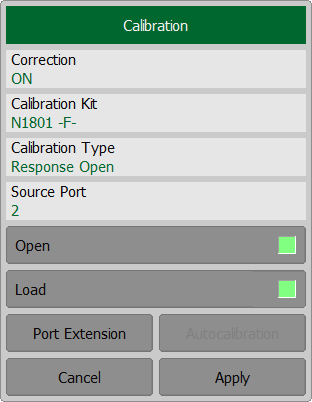Expanded reflection normalization is the simplest calibration method used for reflection coefficient measurements (S11). Expanded reflection normalization involves connection of the following two standards to the test port (See figure below):
•SHORT or OPEN.
•LOAD.
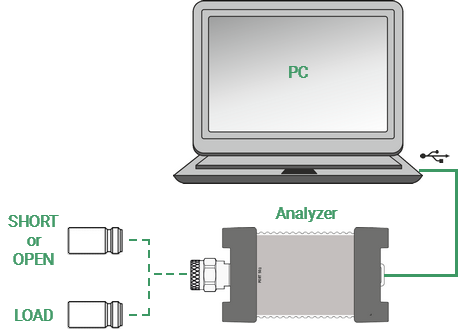
Expanded reflection normalization
Measurement of the two standards allows for estimation of the reflection tracking error term Er and directivity error term – Ed. The optional directivity calibration increases the accuracy of the reflection normalization.
Before starting calibration perform the following settings: select active channel, set the parameters of the channel (frequency range, IF bandwidth, etc.), and select the calibration kit.
Expanded Reflection Normalization for 1-port VNA
To perform expanded reflection normalization, use the softkey Calibration in the left menu bar. Connect an OPEN or a SHORT standard to the test port as shown in above. Perform measurement using Open or Short softkey respectively.
During the measurement, a pop-up window will appear in the channel window. It will have Calibration label and will indicate the progress of the measurement. On completion of the measurement, the left part of the Open or Short softkey will be color highlighted. Then connect a LOAD standard to the test port as shown in above. Perform measurement using Load softkey respectively. On completion of the measurement, the left part of the Load softkey will be color highlighted.
To complete the calibration procedure, click Apply softkey. This will activate the process of calibration coefficient table calculation and saving it into the memory. To clear the measurement results of the standards, click Cancel softkey. This softkey does not cancel the current calibration. To disable the current calibration, turn off the error correction function (See Error Correction Disabling). |
Expanded Reflection Normalization for RNVNA
To perform reflection normalization, use the softkey Calibration in the left menu bar. Then click on the Calibration Type field. In the dialog Calibration Type select Response Short or Response Open. Complete the setting by clicking Ok.
In the dialog Calibration assign a signal source port, click on the Source Port field. Then select port in the dialog Select Port.
Connect an OPEN or a SHORT standard to the test port as shown in figure above. Perform measurement using Open or Short softkey respectively.
During the measurement, a pop-up window will appear in the channel window. It will have Calibration label and will indicate the progress of the measurement. On completion of the measurement, the left part of the Open or Short softkey will be color highlighted. Then connect a LOAD standard to the test port as shown in above. Perform measurement using Load softkey respectively. On completion of the measurement, the left part of the Load softkey will be color highlighted.
To complete the calibration procedure, click Apply softkey. This will activate the process of calibration coefficient table calculation and saving it into the memory. To clear the measurement results of the standards, click Cancel softkey. This softkey does not cancel the current calibration. To disable the current calibration, turn off the error correction function (See Error Correction Disabling). |
note |
The calibration status can be checked in channel status bar (See General error correction status table) or in trace status field (See Trace error correction status table). |

